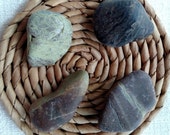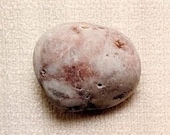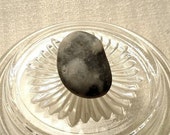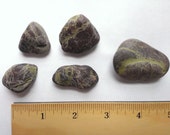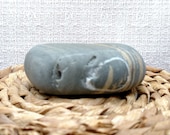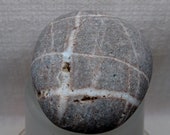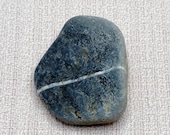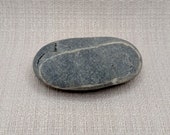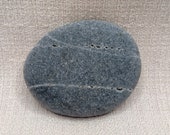Limestone: Unraveling the Wonders of a Timeless Stone
In the vast tapestry of geological treasures, limestone emerges as a versatile and intriguing stone, offering a myriad of uses and a rich history.

The Timeless Elegance of Limestone Stones
In the grand tapestry of Earth’s geological wonders, limestone emerges as a steadfast thread, weaving through the narrative of history and architecture. This sedimentary rock, composed primarily of calcium carbonate, holds within its grains the secrets of epochs long past. Its journey from the ocean floor to towering cliffs and intricate sculptures tells a tale of transformation and endurance.
Limestones are not typically associated with beachstones on the Northeast coast. Coastal areas in the Northeastern United States are more likely to feature rocks like granite, basalt, schist, and sandstone. Limestone is more commonly found in geological formations that were once part of ancient seas or shallow marine environments.
However, exceptions can occur. If there are limestone outcrops or formations in the vicinity of a particular coastline, limestone beachstones might be present. The geological diversity of the region means that while limestone beachstones might be relatively uncommon, they are not impossible to find. Local geological surveys or guides specific to the area you’re interested in can provide more accurate information on the types of rocks you might encounter on Northeastern beaches.
Limestone’s Renaissance in Architecture:
Limestone’s close association with human civilization dates back to ancient times, where it became a cornerstone in architectural marvels like the Great Pyramids of Giza and the grand cathedrals of Europe. Its workability, coupled with an inherent durability, made it a preferred medium for intricate carvings and colossal structures that withstand the test of centuries.
Versatility Beyond Stone Walls:
Yet, limestone isn’t confined to the rigid lines of architectural formality. This versatile stone transcends the boundaries of function, finding purpose in agriculture, water purification, and even skincare. Its powdered form, known as agricultural lime, amends acidic soils, ensuring bountiful harvests. In water treatment, limestone lends its natural filtration properties, purifying water for communities worldwide.
Unearthing the Geological Mysteries:
Geologically, limestone’s formation is a dance between minerals and millennia. Compressed remnants of marine organisms, from shells to coral fragments, create a mosaic that captures the essence of ancient seas. It’s this organic origin that infuses limestone with a unique character, offering a canvas of fossils that whispers tales of prehistoric life.
The Priceless Significance:
Beyond its tangible applications, limestone is a storyteller, each layer a chapter etched in stone. Its affordability, compared to some counterparts, renders it not just a geological commodity but a democratic piece of Earth’s history accessible to all.
As we embark on a journey through the realms of limestone, the following questions and answers aim to illuminate the many facets of this remarkable stone. From the pragmatic to the poetic, limestone’s allure persists, inviting us to explore its depths and appreciate its enduring contributions to our world.
What is Limestone Mainly Used For?
Limestone’s Utilitarian Charm
Limestone stands as a cornerstone in various industries due to its versatile applications. Primarily, it’s a key player in the construction sector, contributing to the creation of buildings, monuments, and sculptures. The stone’s durability and ease of carving make it a favored material for intricate architectural details. Additionally, limestone’s aesthetic appeal extends to the art world, where sculptors leverage its workability to bring their creative visions to life.
Coastal Beach Stones
What is Limestone Good For?
The Virtues of Limestone
Beyond its structural applications, limestone offers multifaceted benefits. In agriculture, limestone is a vital component in neutralizing soil acidity, fostering optimal conditions for plant growth. Its alkaline properties make it invaluable in water purification systems, where it helps balance pH levels. Surprisingly, limestone has found a niche in skincare, with historical uses and claims of skin-nourishing properties.
Why is Limestone So Valuable?
Unlocking the Value of Limestone
Several factors contribute to the intrinsic value of limestone. Abundant in nature, limestone serves as an accessible and cost-effective resource. Beyond its practical applications, limestone plays a crucial role in paleontology, preserving fossils with remarkable detail. Its enduring presence in architectural masterpieces adds to its cultural and historical significance.
Where Can I Find Limestone?
Exploring Limestone’s Geological Presence
Limestone spans the globe, showcasing its geological diversity. From iconic formations like the White Cliffs of Dover to limestone-rich quarries, the stone can be found in various landscapes. The processes that shape limestone, from sedimentation to metamorphism, are as diverse as the locations where it thrives.
Is Limestone Good for Your Skin?
The Beauty of Limestone in Skincare
Limestone’s historical use in skincare reflects its unique qualities. While direct application is rare, the minerals found in limestone and its purported skin-nourishing properties have garnered attention. Understanding these attributes sheds light on the stone’s potential contributions to skincare routines.
What are 3 Interesting Facts About Limestone?
Limestone’s Fascinating Trivia
- Architectural Legacy: Limestone has been a cornerstone in iconic structures throughout history, from the Great Pyramid of Giza to the Parthenon.
- Cave Formations: Limestone’s solubility in water leads to the creation of captivating cave formations, such as stalactites and stalagmites.
- Ancient Building Material: Ancient civilizations, including the Romans, extensively used limestone in construction due to its abundance and malleability.
What Are the Disadvantages of Limestone?
Examining the Downsides
While limestone boasts numerous advantages, environmental impacts and structural limitations should be considered. Erosion susceptibility, especially in acidic conditions, and concerns about quarrying practices are aspects to be aware of.
Wishing Rocks
What Are the Pros and Cons of Limestone?
Balancing the Scales
Pros:
- Versatility in construction.
- Abundance and cost-effectiveness.
- Unique aesthetic appeal.
Cons:
- Susceptibility to erosion.
- Environmental concerns in quarrying.
- Limited resistance to acids.
Is Limestone Safe for Humans?
Ensuring Safety in Limestone Use
Limestone is generally safe for humans, but precautions should be taken during handling and processing. Understanding its composition and potential health concerns ensures safe utilization in various applications.
Is Limestone Cheap or Expensive?
Demystifying the Cost of Limestone
Limestone is often considered an affordable material due to its widespread availability. Factors influencing its pricing include extraction costs, transportation, and specific geological characteristics.
What are 2 Interesting Facts About Limestone?
More Intriguing Tidbits
- Fossilization Aid: Limestone’s composition aids in the preservation of fossils, offering a unique window into ancient life.
- Karst Landscapes: The dissolution of limestone creates distinctive landscapes known as karst, characterized by sinkholes, caves, and underground rivers.
Why is Limestone So Cheap?
Decoding the Economics
Limestone’s affordability is rooted in its abundance and straightforward extraction processes. The economic factors contributing to its cost-effectiveness make it a preferred material in various industries.
What State Has the Best Limestone?
Exploring Limestone Havens
Certain states, like Indiana and Kentucky, are renowned for high-quality limestone formations. These states boast significant geological deposits, making them prominent sources of premium limestone.
How Can You Tell if a Rock is Limestone?
Identifying Limestone Like a Geologist
Geologists employ various methods to identify limestone, including its distinctive texture, fossil content, and the effervescence test with dilute hydrochloric acid. Familiarizing yourself with these characteristics aids in accurate identification.
What State is Known for Limestone?
Limestone’s Geographical Fame
Indiana is particularly known for its limestone, often referred to as “Indiana Limestone.” The state’s geological conditions have fostered the development of high-quality limestone used in numerous architectural masterpieces.
What is the Spiritual Meaning of Limestone?
Symbolism in Stone
Limestone holds symbolic significance in various cultures, often representing stability, endurance, and a connection to the earth. Understanding the spiritual meanings attributed to limestone adds depth to its cultural importance.
Balancing Rocks – Cairns
Is Limestone Rare?
The Rarity of Limestone
Despite its widespread use, limestone’s rarity might surprise. Geological conditions dictate its prevalence or scarcity, with certain types of limestone being rarer than others.
Why Does Limestone Turn Black?
Decoding Color Changes
Factors such as environmental influences, including pollution and biological processes, contribute to the discoloration of limestone, turning it black over time.
What is the Main Problem of Limestone?
Challenges in Limestone Use
Main challenges include susceptibility to erosion, especially in acidic conditions, and environmental concerns related to quarrying practices. Addressing these challenges ensures responsible and sustainable limestone use.
Why Don’t We Build With Limestone?
Architectural Considerations
While limestone has a rich history in architecture, contemporary considerations such as its susceptibility to weathering and environmental impact influence its use in modern construction.
What Weakens Limestone?
Understanding Vulnerabilities
Factors like acid rain, pollution, and physical weathering can weaken limestone. Identifying these vulnerabilities helps in implementing strategies to mitigate potential issues.
What is Better Than Limestone?
Alternative Materials
Various stones, such as granite, marble, and even engineered materials, might be preferred in specific contexts over limestone. Understanding the strengths and weaknesses of alternatives aids in informed decision-making.
Is Limestone Good for Backyard?
Limestone in Outdoor Spaces
The use of limestone in backyards depends on specific projects. Its aesthetic appeal makes it suitable for landscaping, patios, and outdoor structures. However, its susceptibility to weathering should be considered.
Which is Better: Gravel or Limestone?
Choosing Between Gravel and Limestone
The choice between gravel and limestone depends on the intended application. Gravel might be preferable for driveways, while limestone’s aesthetic appeal makes it suitable for landscaping. Understanding the characteristics of each helps in making an informed decision.

